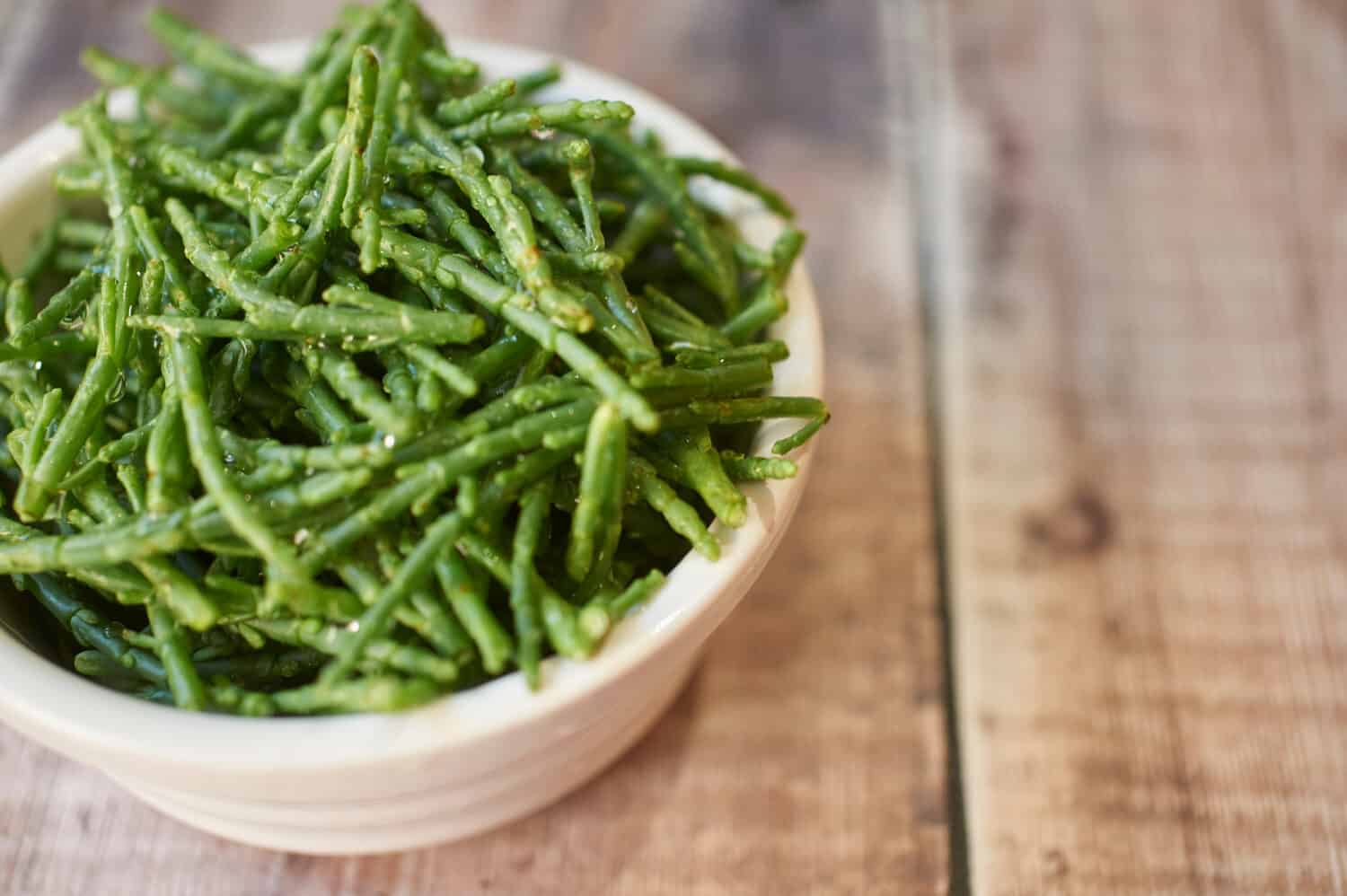

What is Samphire? How to Cook, Taste, Health Benefits & Recipes
What is samphire, or as it is commonly known, sea asparagus? If you do not know, you are most likely not the only one. However, did you know that this marine vegetable is delicious and nutritious? It's called samphire, and it is gaining popularity in kitchens across the globe. From adding flavor to your favorite dish to helping fight off cancer, this is a vegetable you want on your radar. In this article, we will answer the question of what is samphire? We will also discuss how you cook it and all the health benefits that it has to offer. Grab a pen and a piece of paper because you will want to write this down; let's dive in.
What is Samphire?
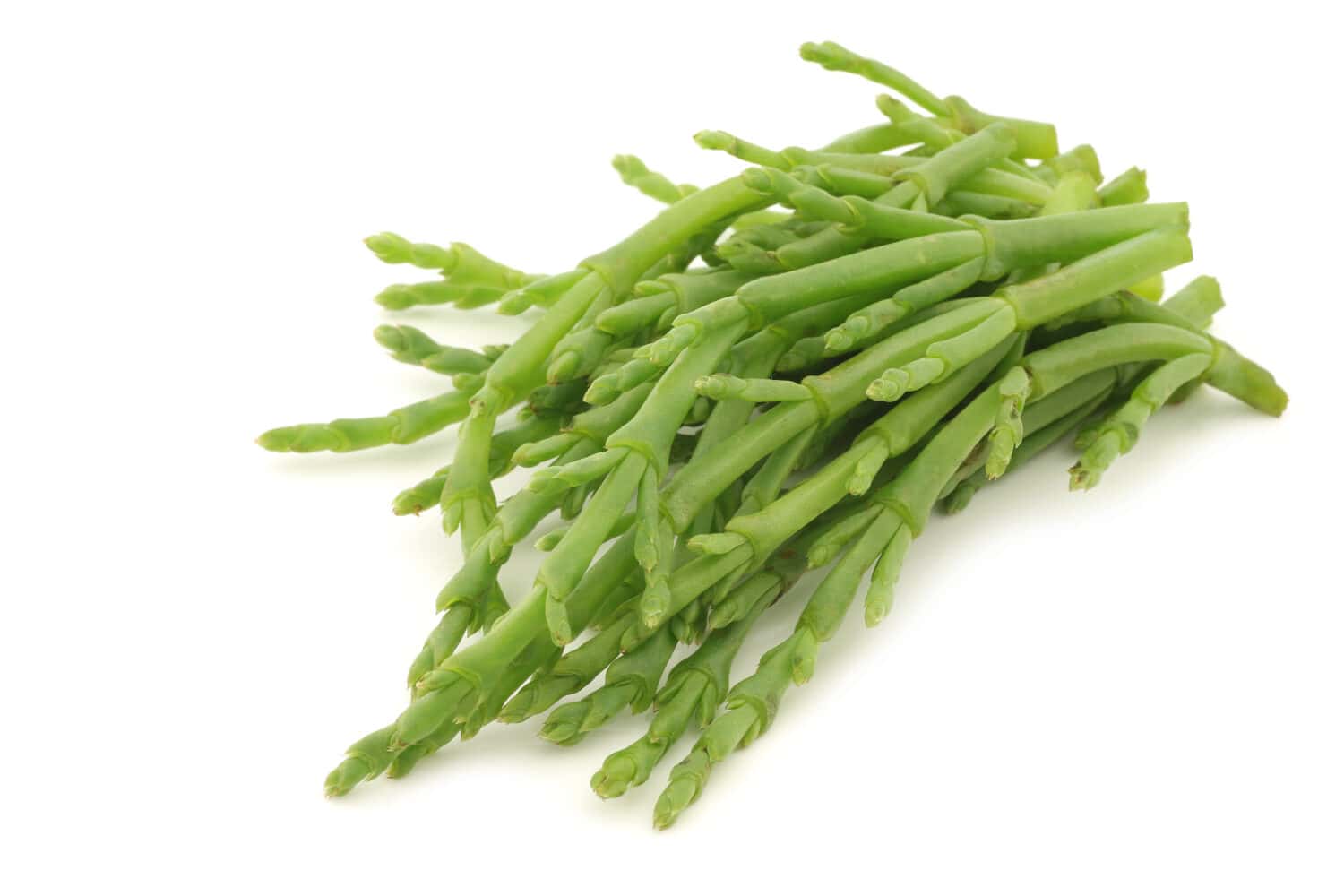
©Peter Zijlstra/Shutterstock.com
The name samphire encompasses a wide variety of succulent salt-tolerant plants. While there are many varieties of this plant, the two most commonly used in cooking are rock samphire and marsh samphire. This plant is also commonly referred to as sea asparagus. The more popular of the two species, marsh samphire (Salicornia europaea), looks like small asparagus and grows along shorelines and beaches. It belongs to the same family as beets. People can find it in both Europe and North America. Besides being used in the kitchen, marsh samphire was also used to make soap and glass.
Rock samphire (Crithmum maritimum) is less common and less well-known than the marsh samphire species. It belongs to the Umbelliferae family, along with carrots, celery, fennel, and parsnips. Although most people would not recognize this plant now, in the past it was more commonly used for food than the marsh samphire. The marsh samphire was more heavily used in the glass-making aspect and was only eaten by the poor, whereas all ate rock samphire. This variety can be found along coastal cliffs and is more difficult to track down because of its growing locations. Additionally, it looks different from marsh samphire. Rock samphire has glossy, thick leaves and small greenish-white flowers. It is commonly found in Ireland, the United Kingdom, and the Isle of Man.
Where to Find Samphire
Now that you know what this marine vegetable is, let's learn about where it grows and where you can purchase it.
Geography
Marsh samphire is the most widely distributed species of samphire. It can be found across the UK and Ireland. Additionally, it grows along various beaches and marshlands in North America. It is versatile because it can grow at all levels of sandy or muddy salt marshes and in various marine sediments. In North America, this species of samphire can be found along both coasts.
Rock samphire grows along coastlines in Europe from the Black Sea to the South of Great Britain. It is much harder to locate and cultivate than marsh samphire, making it a much more niche market plant. Additionally, it mostly exists on coastal cliffs and rock outcrops along the sea.
For Purchase
If you want to add samphire to your cooking dishes, you will have a much easier time finding marsh samphire in your local grocery store. You can typically find marsh samphire year-round in certain grocery stores or purchase it online. However, it is considered in season between May and August and can most likely be found near the fish section of the grocery store. If you have difficulty finding fresh samphire, you can purchase the seeds of either species and grow them yourself. Be sure to look into proper care for your samphire before purchasing to ensure you have the right tools and environment to grow it.
Another thing to note is if fresh samphire is your goal, then you will most likely only find marsh samphire. Rock samphire is difficult to find fresh and typically has an unpleasant smell that makes many people avoid using it while fresh.
Samphire in the Kitchen

©Alan Mather/Shutterstock.com
Now that you understand where to find your sea asparagus let's discover how to incorporate it into your kitchen.
Selecting and Preparing
While these two may share the name of samphire, they have few similarities besides their name and succulent nature. Besides the differences between their appearance and growing locations, they also differ in flavor. The marsh samphire is all salt with some crunch, whereas the rock samphire has the same salty flavor and crunch but with an additional aromatic flavor. The flavor of rock samphire resembles that of a carrot-parsley combination.
When preparing to cook your marine vegetable you want to ensure you got a good batch. If you use fresh samphire in your dish, ensure it is vibrant, green, and crisp. Those are the indicators of fresh samphire; if it appears limp or dull, then it is old. Also, you want to thoroughly wash your samphire before cooking it. Given that it often grows on coastlines and in marshes, it often has lots of sand and dirt on it that you do not want to get into your meals.
Next, cut off or remove any stems and roots from the plant as they are not good to consume. If you have any large pieces of your samphire, be sure to cut or break them into smaller pieces. This will help ensure that your marine vegetable will cook properly and evenly throughout.
Cooking Your Samphire
The most common methods for cooking samphire are blanching, steaming, and frying in a batter. If you choose to blanch, do not add salt to the water mixture because the samphire is salty enough on its own. While the saltiness of this plant usually makes it a great pairing for seafood, it can be paired with other dishes as well.
Storing
Once you are finished cooking your samphire, you want to store it properly so that it will keep as long as possible. There are two ways to store your samphire properly: refrigeration and freezing. If you purchase your fresh samphire and don’t want to use it immediately, you can store it in the fridge. To store it in the fridge, wrap it loosely with a damp paper towel and store it in a plastic bag. It will stay fresh in the fridge for up to five days.
Alternatively, you can freeze samphire if you want it to stay fresh longer. To freeze it, blanch the samphire first, then shock it in ice water. Drain it completely and freeze in an airtight bag or container. Storing it this way will allow it to keep for up to six months
Samphire Recipes
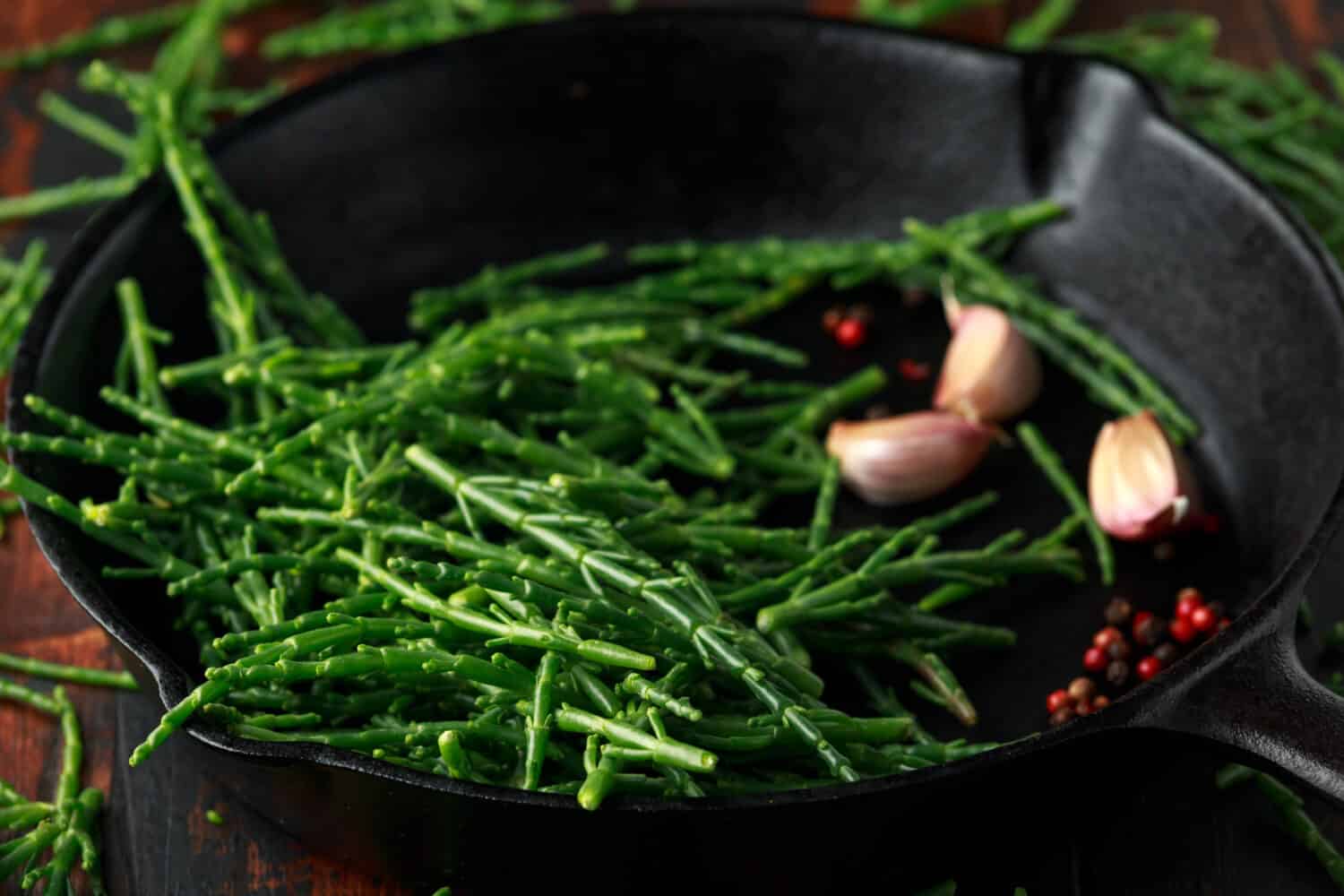
©DronG/Shutterstock.com
There are several ways to add samphire to your cooking repertoire. Here are three easy ways to incorporate it at your next family dinner.
Stand Alone Side Dish
Marsh samphire has a unique flavor to it that is best enjoyed when it is minimally cooked. You can serve marsh samphire on its own as a side dish to any meal. Although, due to its salty flavor, many people typically serve it alongside fish and seafood. To prepare this dish, you simply blanch the samphire in boiling water for about three minutes. Afterward, drain it and add butter (be sure it is unsalted), olive oil, black pepper, and a squeeze of fresh lemon juice. Top it with fresh herbs of your choosing and serve.
Samphire Linguine
For this dish, you will need linguine, lemon, samphire, shrimp, fresh herbs, butter, minced garlic, and heavy cream. Cook the linguine and drain it. Then place the pasta back into the pot and add 2 tbsp of butter and ¼ cup of heavy cream. Also, add your minced garlic and half of your fresh chopped herbs. Mix well.
In a separate pan, cook your shrimp with some olive oil and seasoning of your choice. While your shrimp are cooking, wash, trim, and blanch your samphire. Once both your shrimp and samphire are finished, add them to the pot with the pasta. Squeeze your fresh lemon juice on top and serve.
Samphire Salad
Samphire is also a delicious addition to a salad. Blanch them, as we did in the previous recipes, and add them to a salad. You can add them to a vegetable salad, such as one with asparagus, beans, and shallots. Or you could add them to a lighter salad, such as one with tomatoes, mozzarella cheese, red onion, and balsamic vinegar. Any salad will do; create a salad to your preference and add blanched samphire to it for an additional, delicious flavor punch.
Health Benefits of Samphire
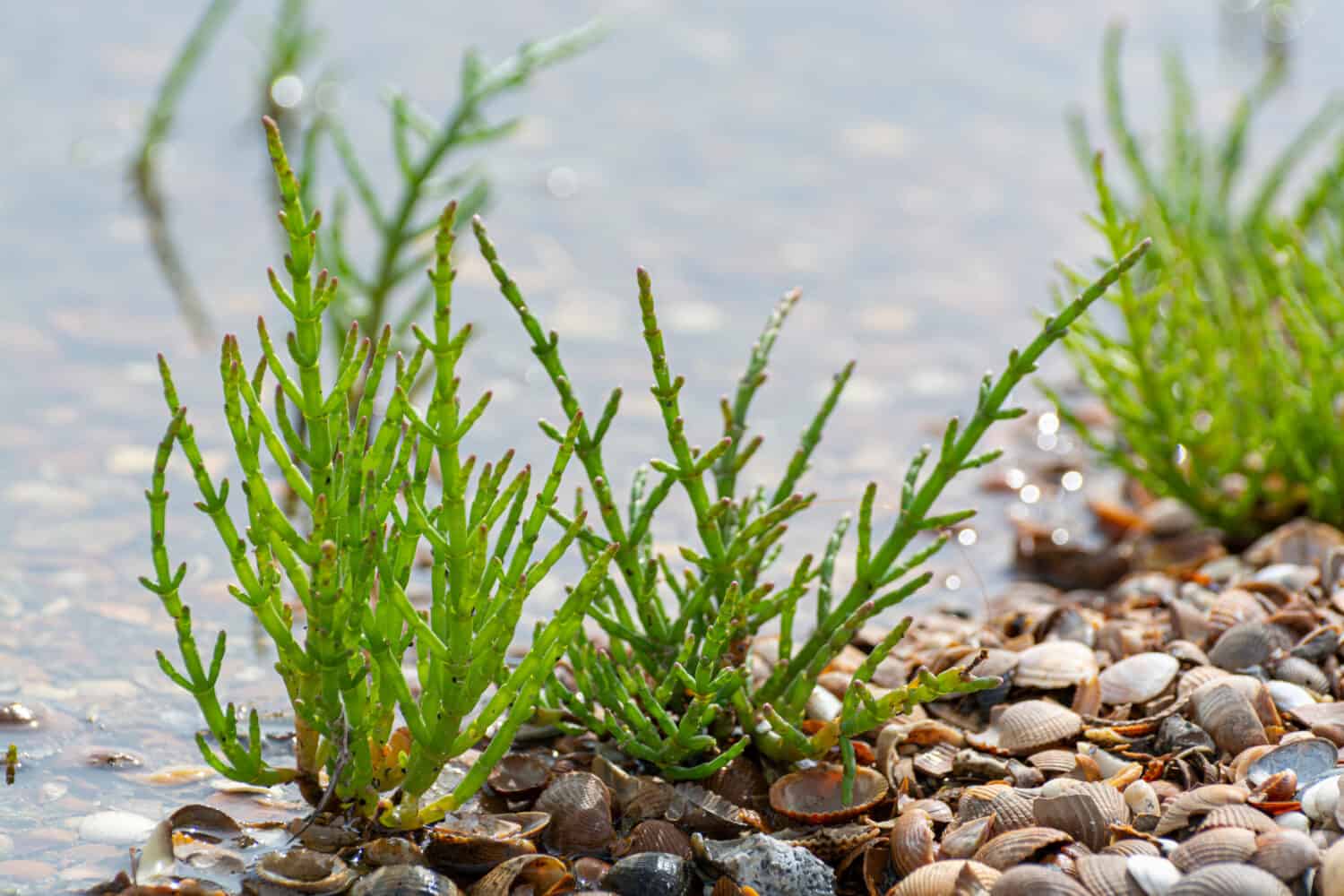
©barmalini/Shutterstock.com
Besides being a unique and delicious addition to your cuisine, samphire offers great nutritional benefits. This low-calorie food is a great source of protein, Vitamin A, iron, and calcium. There has also been scientific evidence proving its effectiveness in improving immune function and reducing inflammation. Also, marsh samphire is high in Vitamin C and carotenoids. Those carotenoids have strong cancer-fighting properties by inhibiting tumor growth.
Samphire is also a natural source of dietary fiber and can help the digestive system by bulking up stool and reducing inflammation in the gut. Additionally, it is a rich source of calcium, which can help improve overall bone health. It can even help regulate sleep due to the levels of magnesium it contains. Rock samphire, in particular, has also been shown to have amazing effects on skin health and skin care.
With all of these benefits and the crunchy, delicious flavors that it adds to dishes, it is no wonder that it is becoming an increasingly popular food item.
Your Samphire Checklist
Here are some quick things to remember about Samphire.
| Category | Description |
|---|---|
| Food Type | Marine vegetable Rock samphire is a part of the Umbelliferae family, along with carrots, celery, fennel, and parsnips where as marsh samphire is part of the beet family. Type of succulent salt-tolerant plant |
| Appearance | Marsh samphire looks like small asparagus. Rock samphire has glossy, thick leaves and small greenish-white flowers. |
| Where to Find Samphire | Marsh samphire is easier to find than rock samphire. It can be found at select grocery stores and online. |
| Selecting Samphire | For fresh samphire, make sure it is vibrant, green, and crisp. |
| Cooking Samphire | The most common cooking methods are blanching, steaming, and frying in a batter. |
| Keeping Samphire | Two ways to store it: refrigeration and freezing. Refrigeration keeps it fresh for up to five days. Freezing keeps it fresh for up to six months. |
| Health Benefits | It is a great source of protein, Vitamin A, iron, and calcium. Also, has antiinflammatory properties, helps with digestion, and has anti-cancer properties. |
Frequently Asked Questions
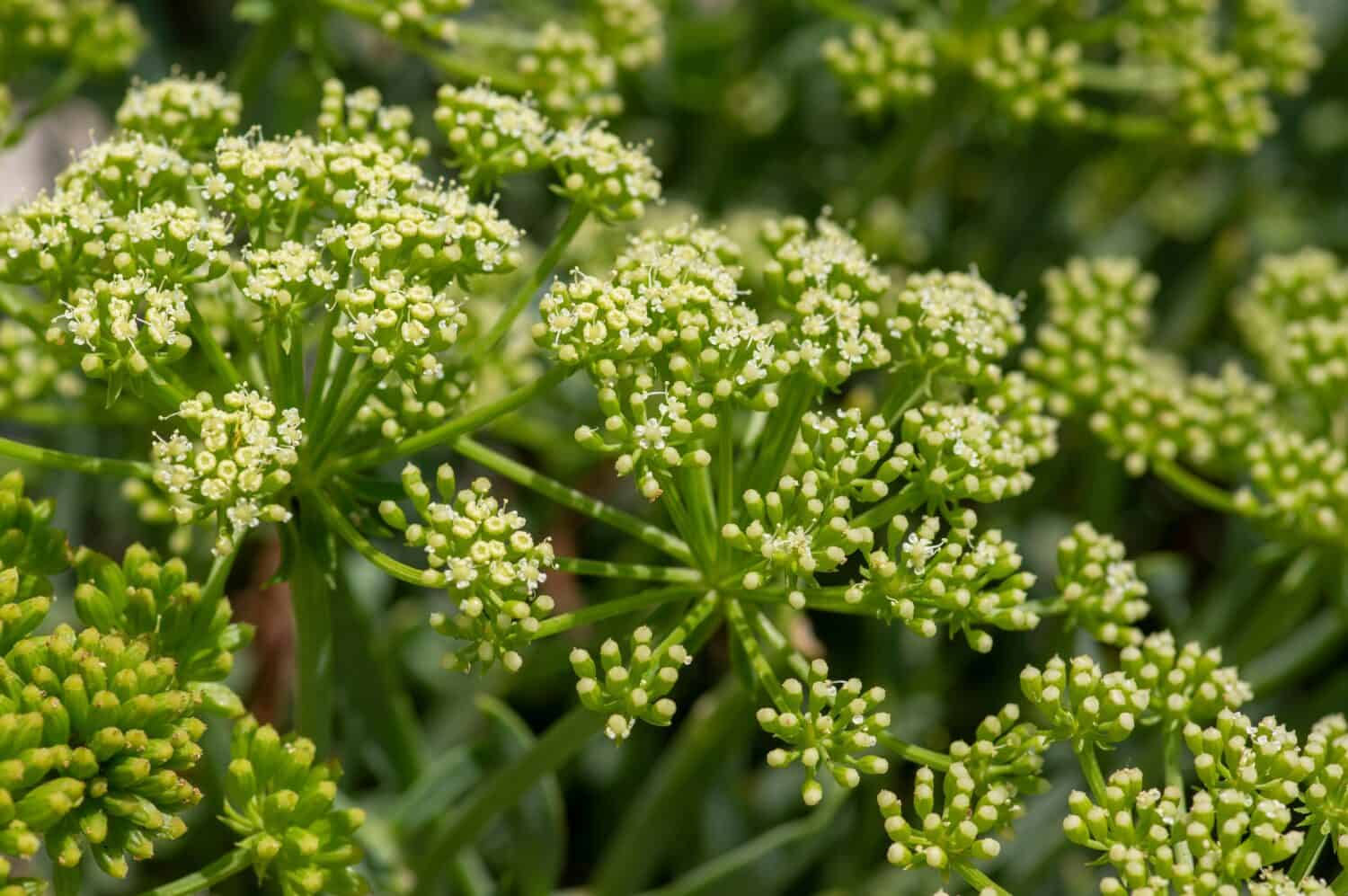
©Iva Vagnerova/Shutterstock.com
Is samphire a seaweed?
While samphire does grow around the sea, on shorelines and beaches, it is not seaweed. Samphire is a succulent plant that resembles a mini cactus. Seaweed is a type of algae that grows in the ocean.
Is samphire related to asparagus?
Despite the name "sea asparagus" and marsh samphire's similar appearance to the well-known vegetable, asparagus and samphire are not related.
Is samphire available in the U.S.?
In North America, marsh samphire grows along both coasts. You can find fresh samphire in certain grocery stores or markets. Also, you can order it online.
Can you eat samphire raw?
If washed thoroughly, samphire can be eaten raw and sometimes used raw in salads. However, it has a very salty flavor, and most people prefer to eat it cooked. Additionally, it is recommended that rock samphire is always cooked before consumption.